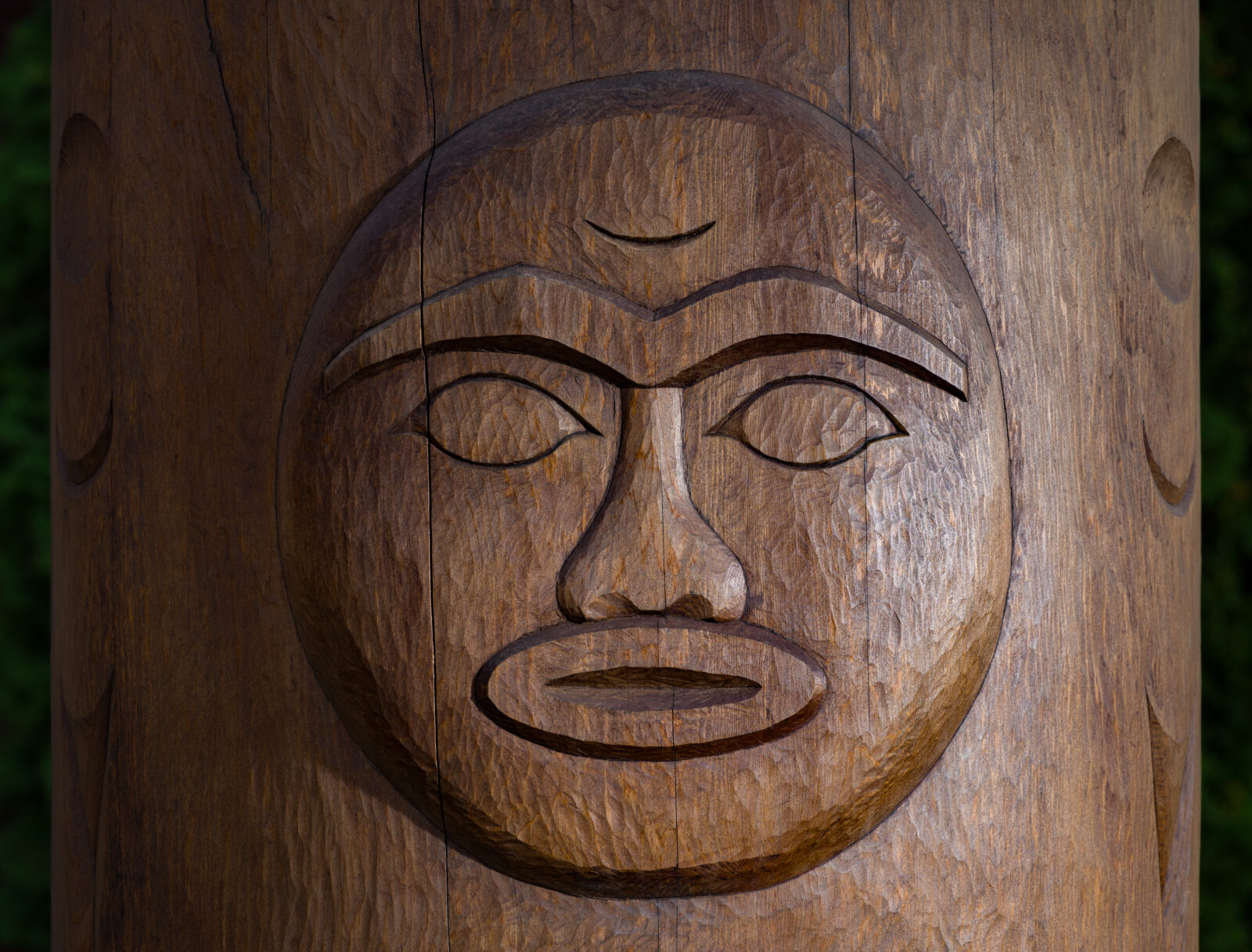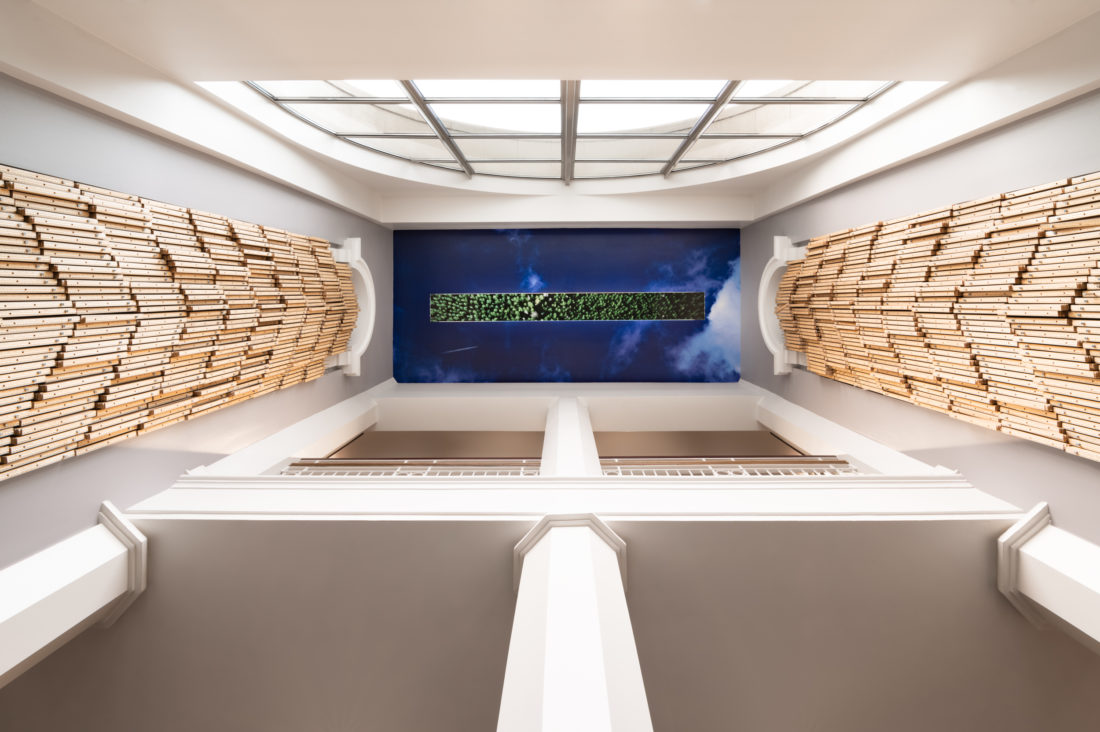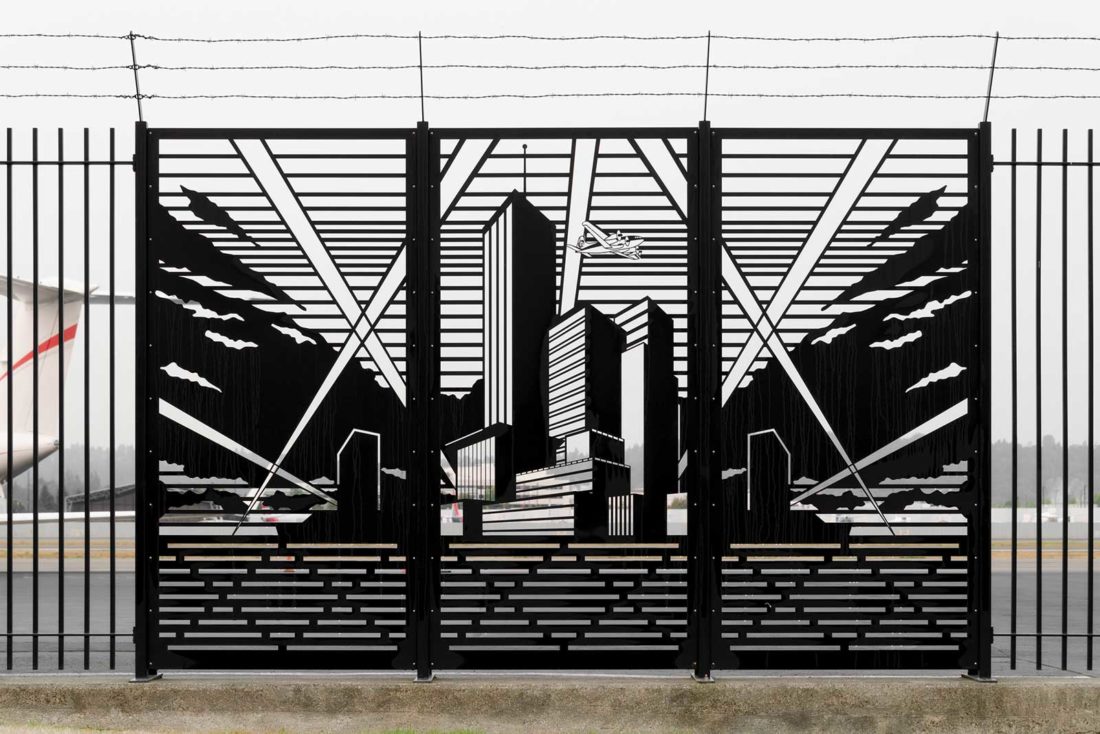Rich History at Seattle’s First Airport

A new story pole by Duwamish carver Michael Halady joins a collection of artworks at the King County International Airport that honor the location’s past.
In 1910, just a few years after the Wright brothers first successfully went airborne, a crowd of 20,000 people gathered at The Meadows, a horseracing resort near the Duwamish River. The draw? Pioneer aviator Charles “Crazy Man of the Air” Hamilton was in town to put on a show, diving a Curtiss biplane into the resort’s lake from 500 feet. Reportedly, he was drunk. (He also survived the crash, and many others.)
Within the next year, the City of Seattle’s planning commission set out to transform the farmland along the river into an industrial area. Businessman William E. Boeing Sr. subsequently bought a manufacturing plant there, and it became home to his nascent aviation company, known by 1917 as the Boeing Airplane Company. On that site, Boeing produced and tested 50 Model C trainers for the United States Navy during WWI. Then, in 1928, King County citizens voted overwhelmingly to pay a tax in order to purchase the land and create the region’s first modern municipal airport and its only passenger terminal, which opened in the spring of 1930.


Visit the KCIA and you can see 30,000 Feet, Brad Miller’s enormous sculpture made of 30,000 one-foot wooden rulers, which point to a pair of illuminated photographs hanging from the ceiling. A terrazzo floor by Paul Marioni and Ann Troutner imagines the connections between earth, the moon, and the cosmos beyond. Norman Courtney’s Luminaries uses metal and glass to create Art Deco-inspired, spaceship-shaped pendant lights. A collection of portable works—including paintings, photographs, and small sculptures—hang on the walls of the building’s interior. Outside, several large-scale sculptures line the perimeter of the property, including Peter Reiquam’s Metropolis Fence, which conjures 1930s aviation posters in a series of cut-steel panels. Together, these works celebrate the history and purpose of the site.

Of course, people have lived on and cared for these lands long before aviation ever existed. In December 2020, Greg Thomas with KCIA, reached out to 4Culture about commissioning a new work to honor the Indigenous people—specifically the Duwamish—who had made the site their home long before European settlers arrived in the region.
“They came to us to assist with the project because they wanted guidance in the artist selection process,” says 4Culture Public Art Project Manager Selina Hunstiger. “We were excited to get involved and facilitate a panel that ultimately selected Michael Halady to carve artwork honoring his heritage.” Halady is a direct descendant of Duwamish leader Chief Seattle, for whom the city is named.
That new work—Spirit of the Duwamish —was recently installed at the entrance to the KCIA Terminal Building. A story pole carved from 600-year-old cedar, the form of the sculpture references the house posts that held up two Duwamish longhouses on the site until at least 1855. It’s also a welcome figure with two major symbols: The lower one depicts the collective spirit of the Duwamish welcoming people to their ancestral lands, and the top one depicts Changer, a supernatural being and major figure in the cosmology of Puget Sound First Nations. Changer’s story is one of transformation—fitting for a place so steeped in Indigenous and modern history.
Excited about art at airports? You can also explore the works at Sea-Tac the next time you’re there!
